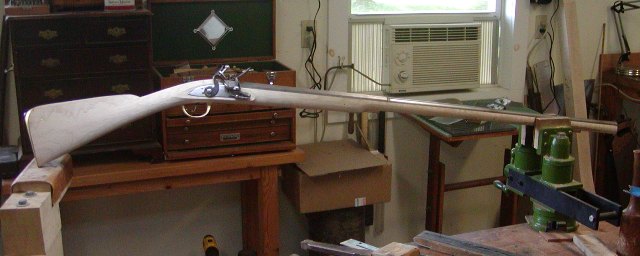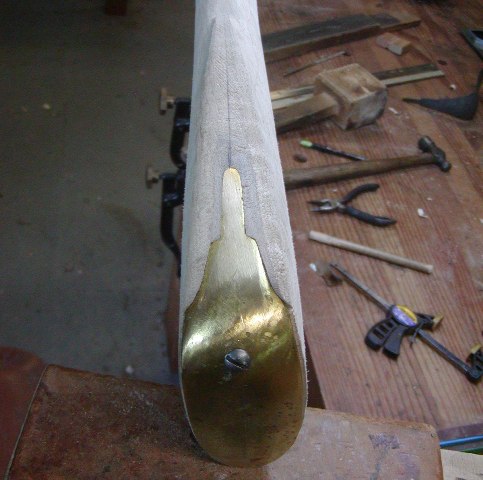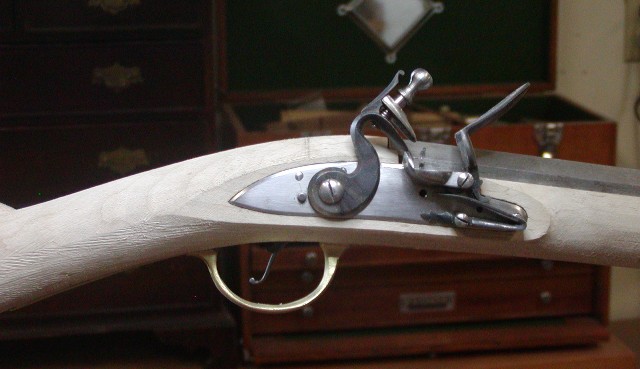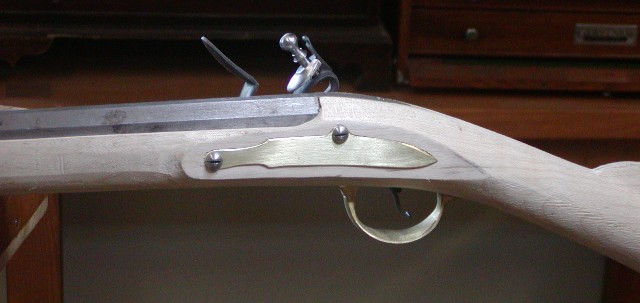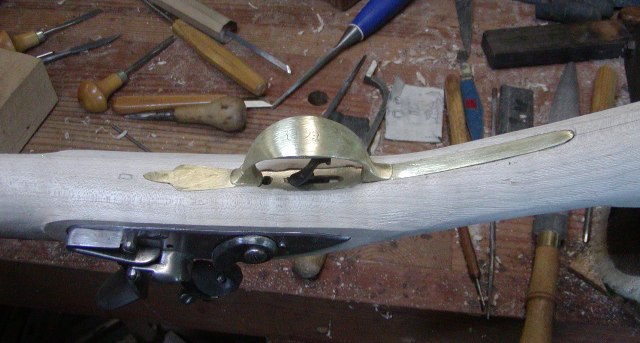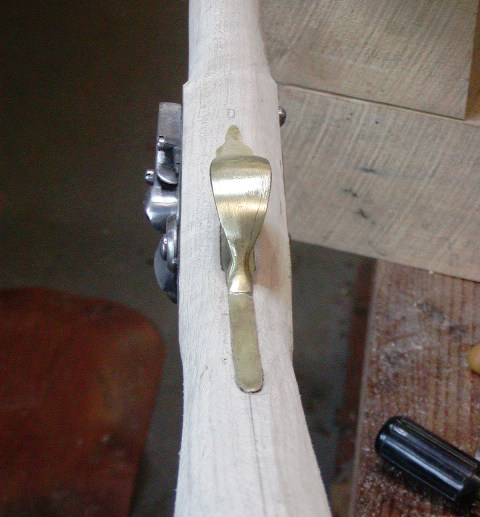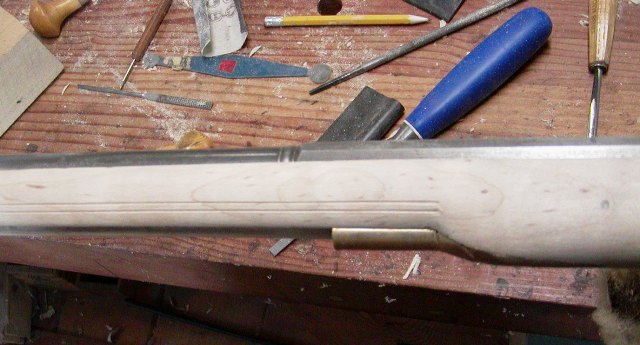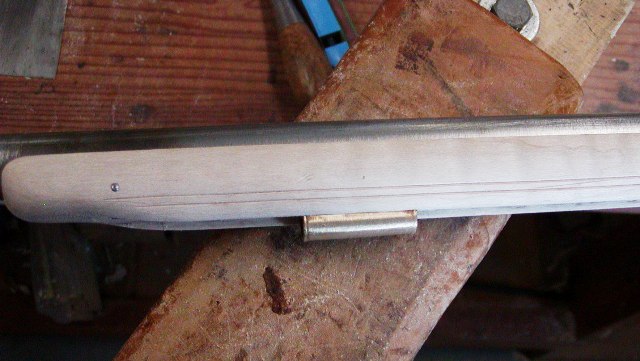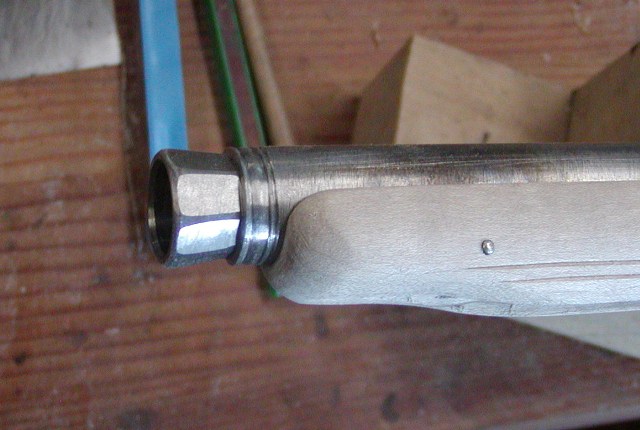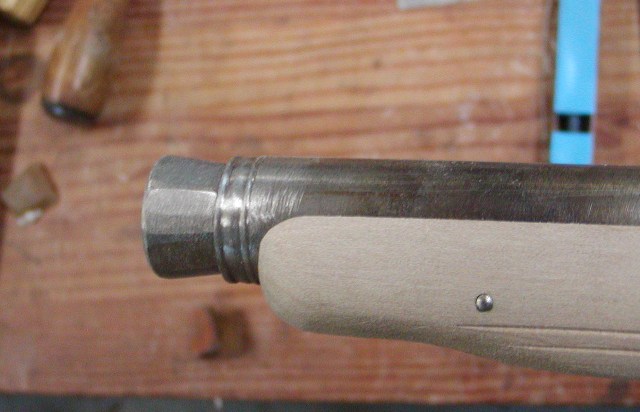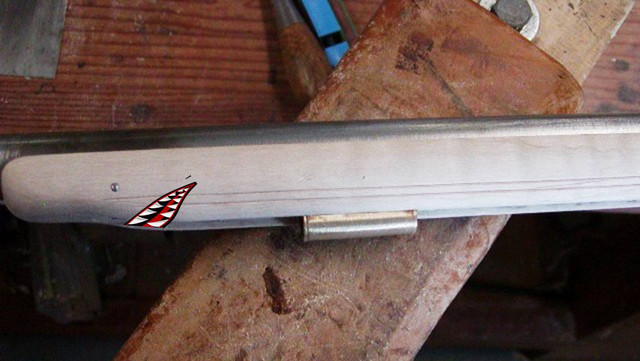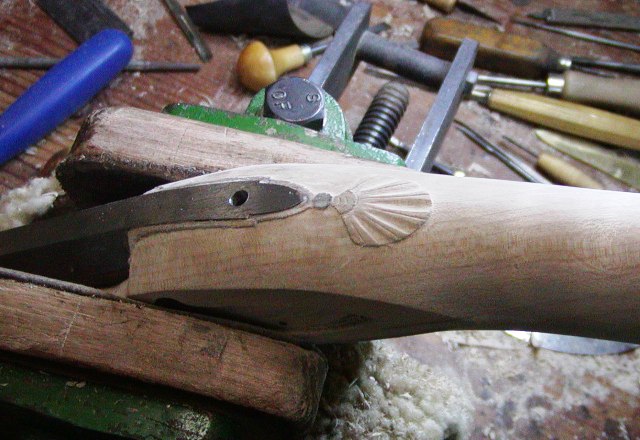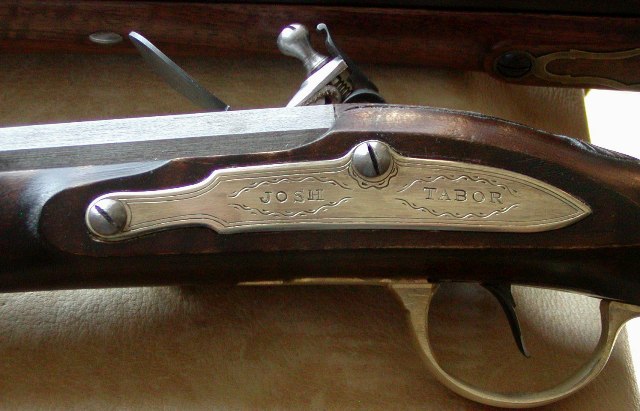- Joined
- Nov 26, 2005
- Messages
- 5,229
- Reaction score
- 10,913
Hi,
Did some shaping. There is a John Hills gun in there. I just have to cut away all the unnecessary wood to find it. The stock is hard red maple with a lot of figure. It does not plane well because you can only work in one direction and it always seems to be the awkward direction. It will be fine.

I positioned the lock understanding I will install a 1/4" "white lightning" liner so I made sure the vent hole is sufficiently far in front of the breech plug so the liner hole and threads don't interfere. I inlet the lock plate but will do the guts later. I worked over the lock a bit more before starting to inlet it. I wanted the cock to rotate a tiny bit further forward overhanging the pan a little more. Now the shoulder of the cock hits the lock plate just as the rear of the tumbler hits the back of the bridle. It is a very good lock.
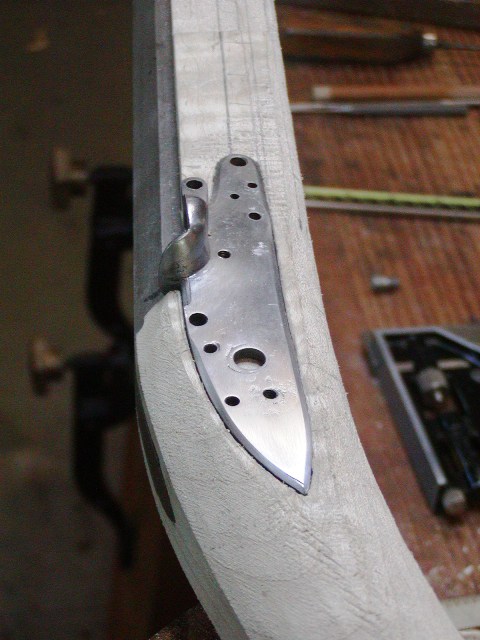

Note that the plate is already drilled for the lock bolts from its previous incarnation. The line on the stock forward of the forward lock bolt hole represents the bottom of the barrel. You can see that the bolt hole will just miss the barrel but it will just snick the top of the 3/8" ramrod. That will present no problems.
After installing the plate, I trimmed off a lot more wood and began shaping the wrist, lock area, and butt. Then I installed the butt plate. It went in really easily.
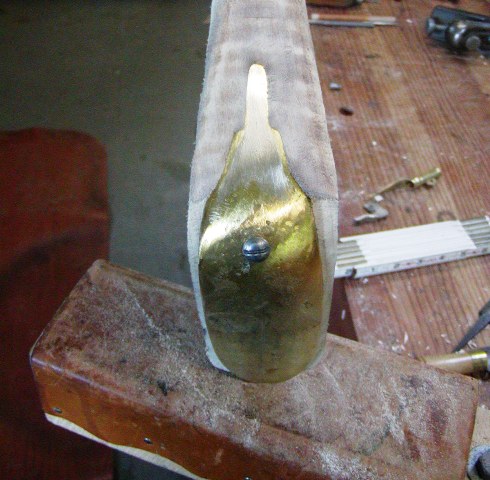
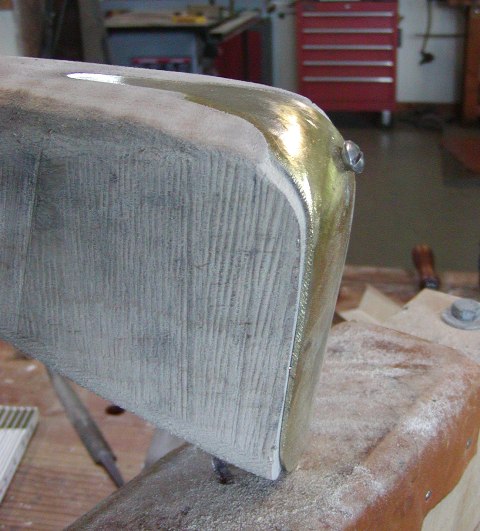
Now I can thin and shape the butt more and refine the profile a bit more. After that I shift to the fore stock.
dave
Did some shaping. There is a John Hills gun in there. I just have to cut away all the unnecessary wood to find it. The stock is hard red maple with a lot of figure. It does not plane well because you can only work in one direction and it always seems to be the awkward direction. It will be fine.

I positioned the lock understanding I will install a 1/4" "white lightning" liner so I made sure the vent hole is sufficiently far in front of the breech plug so the liner hole and threads don't interfere. I inlet the lock plate but will do the guts later. I worked over the lock a bit more before starting to inlet it. I wanted the cock to rotate a tiny bit further forward overhanging the pan a little more. Now the shoulder of the cock hits the lock plate just as the rear of the tumbler hits the back of the bridle. It is a very good lock.


Note that the plate is already drilled for the lock bolts from its previous incarnation. The line on the stock forward of the forward lock bolt hole represents the bottom of the barrel. You can see that the bolt hole will just miss the barrel but it will just snick the top of the 3/8" ramrod. That will present no problems.
After installing the plate, I trimmed off a lot more wood and began shaping the wrist, lock area, and butt. Then I installed the butt plate. It went in really easily.


Now I can thin and shape the butt more and refine the profile a bit more. After that I shift to the fore stock.
dave





